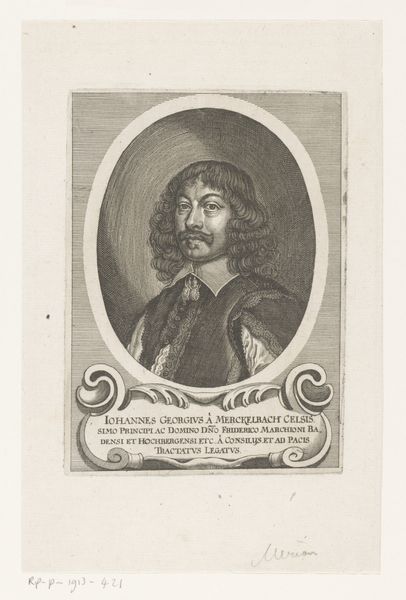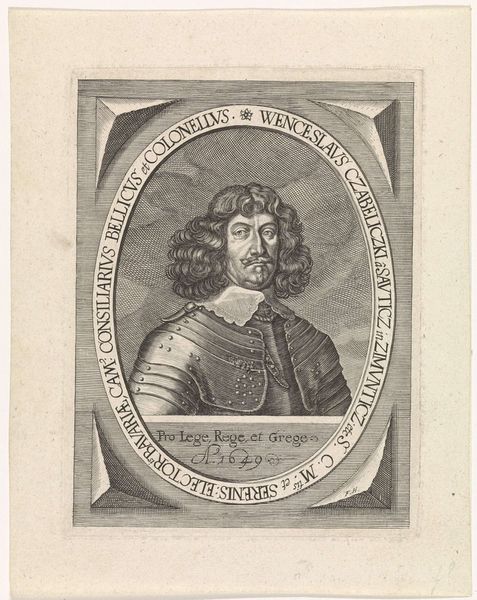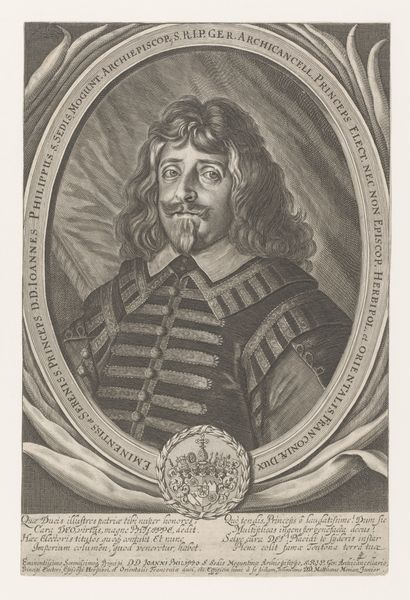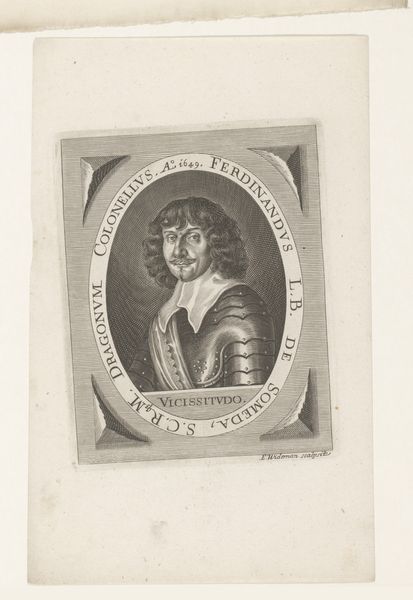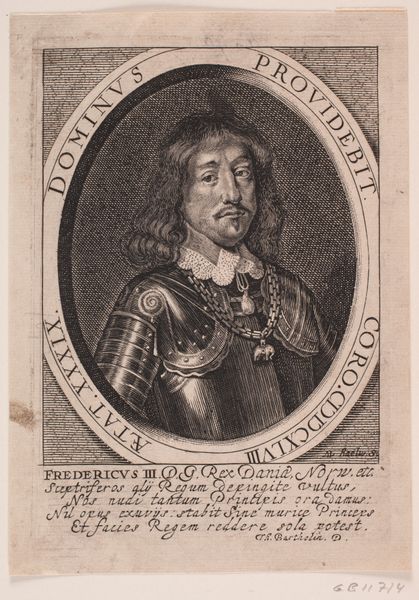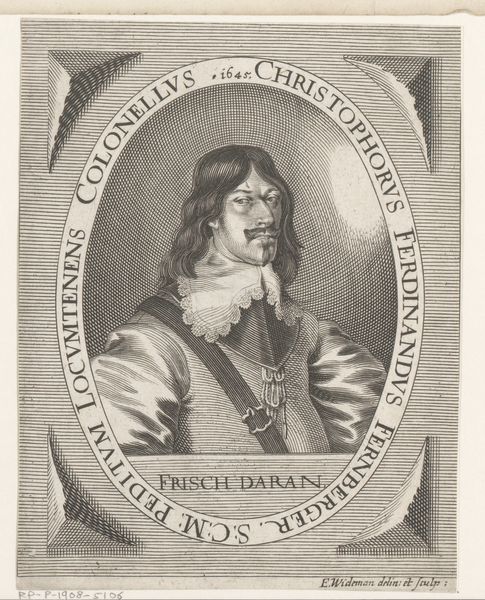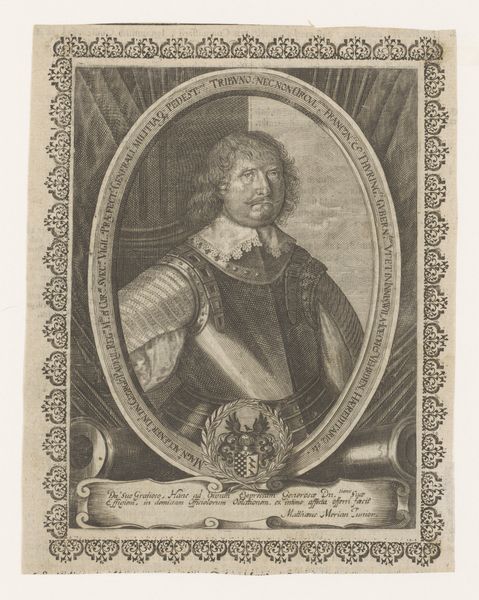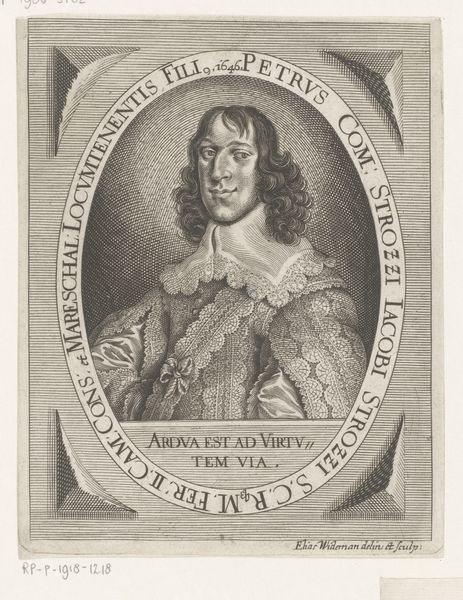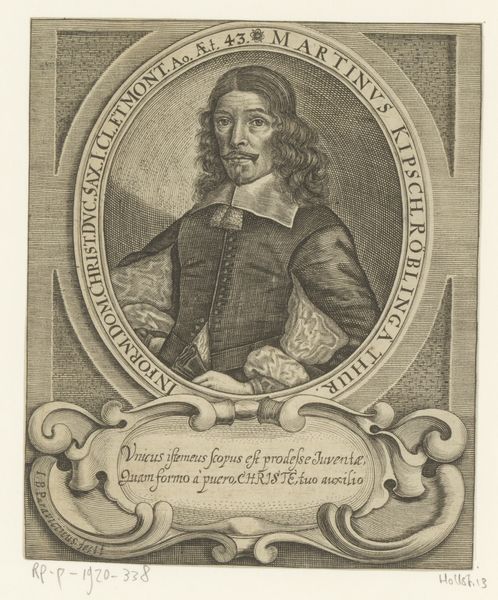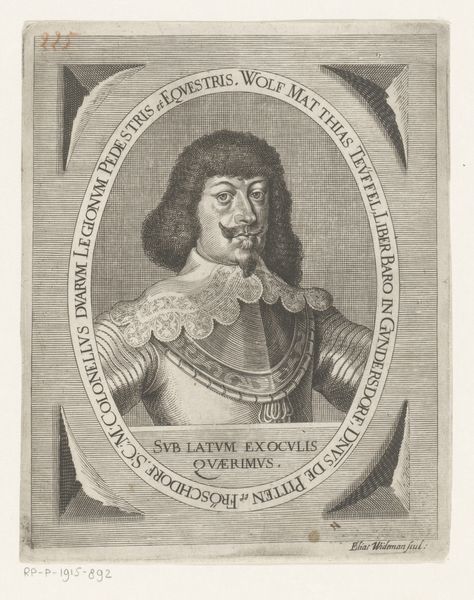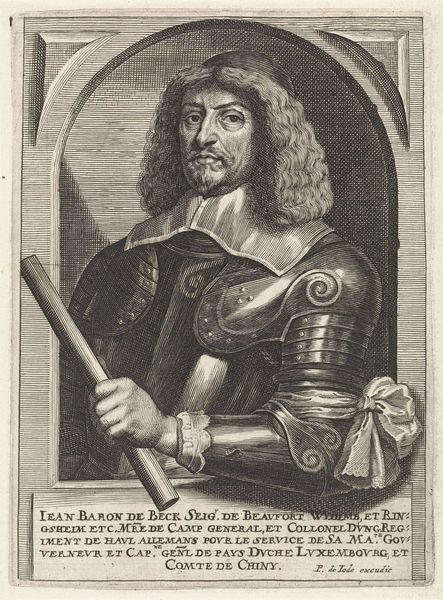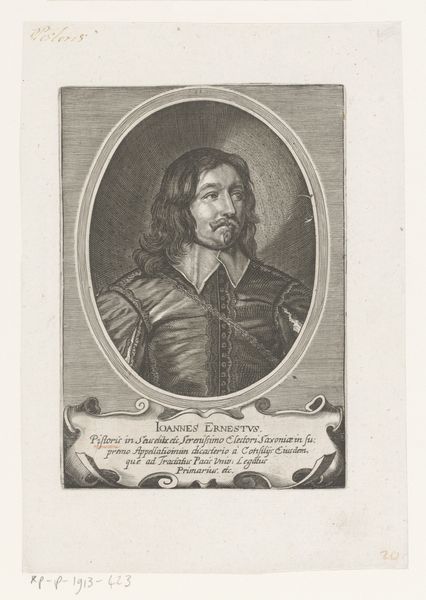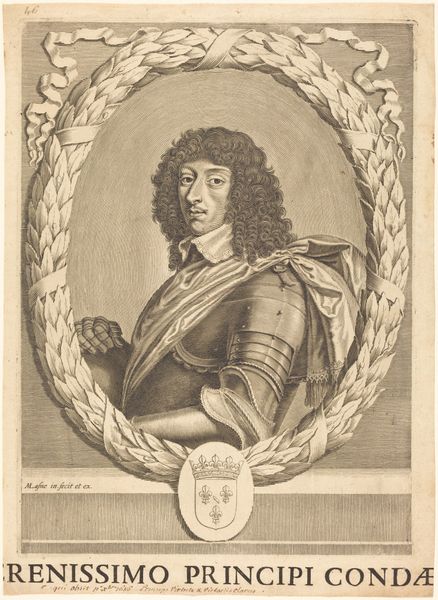
metal, engraving
#
portrait
#
baroque
#
metal
#
old engraving style
#
engraving
Dimensions: height 150 mm, width 113 mm
Copyright: Rijks Museum: Open Domain
Editor: Here we have "Portret van Hartwig Theobald Lytitzky," an engraving on metal made by Elias Widemann in 1649, currently held at the Rijksmuseum. It looks so crisp and formal, that oval frame is very interesting! What grabs your attention with this piece? Curator: The intricate details speak volumes. Consider the labor involved: the meticulous process of etching into metal, the artist acting as a conduit between subject and audience. What does the mechanization of reproduction – engraving, in this case – tell us about early notions of artistic value and its democratization? Editor: So it’s less about the sitter, and more about how it was *made* and what *that* meant? Curator: Exactly. Think of the metal plate as a means of production. Who had access to such skilled labor? Who consumed these images, and how did that consumption influence social structures? The inscription itself, "Laborem succedit honor" or "labor brings honor" only reinforces this line of thinking, pointing back to the labor necessary to *make* the piece. Editor: That inscription! I hadn't really connected that back to the making of the portrait *itself*. Curator: The contrast between the 'high art' of portraiture and the skilled 'craft' of engraving also fascinates me. Where do we draw those boundaries, and what power dynamics are at play when we do? Is Widemann also seeking "honor" for his labor? Editor: That is such a shift in perspective for me, thinking about the artist's labor and the materials as crucial components. I was only thinking about the sitter when I first saw this! Curator: It’s about pulling back the curtain and revealing the means of production that shaped our aesthetic understanding, seeing not just the surface, but also the structural supports that allowed it to take form. Editor: Okay, so this helps me understand that "art" is not created in a bubble: materials, access, skills, labor and context *are* art too!
Comments
No comments
Be the first to comment and join the conversation on the ultimate creative platform.
